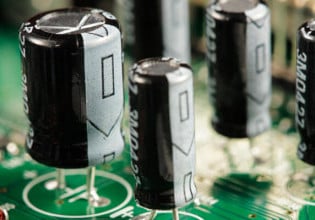EaglePicher Technologies, LLC (EPT), an OM Group, Inc. company announced today that it will receive a $3 million award from the Advanced Research Projects Agency-Energy to further develop their catalytic energy storage technology. Under their continued work with ARPA-E, EaglePicher will focus its research on improving scalability for their Sodium-Beta (Na-Beta) battery by developing an inexpensive stacked design to improve integration in renewable and grid storage applications.
The original ARPA-E effort, "Planar Na-Beta Batteries for Renewable Integration and Grid Applications," successfully demonstrated the concept of using thin BASE (Beta-Al2O3 Solid State Electrolyte) for reduced cell impedance and increased discharge rates while operating at reduced temperatures. Battery models and market studies conducted for the project have shown that the new concept should meet multiple needs of the grid storage market.
This follow-on project leverages EaglePicher's original research with new technology being developed by another ARPA-E awardee, Material Systems and Research Inc. (MSRI). The advanced design will demonstrate the new modular, scalable concept at the end of the eighteen-month project in 450 Watt-hour cells. The continued work by EPT further advances innovations in renewable energy storage.
"We are very pleased to be part of the ARPA-E initiative," said Dave Lucero, EPT's Director of Alternative/Grid Energy Storage. "The development of this technology will no doubt result in a more cost-effective and reliable approach to grid scale energy storage."
EaglePicher is developing a sodium-beta alumina (Na-Beta) battery for grid-scale energy storage. High-temperature Na-Beta batteries are a promising grid-scale energy storage technology, but existing approaches are expensive and unreliable. EaglePicher has modified the shape of the traditional, tubular-shaped Na-Beta battery. It is using an inexpensive stacked design to improve performance at lower temperatures, leading to a less expensive overall storage technology. The new design greatly simplifies the manufacturing process for beta alumina membranes (a key enabling technology), providing a subsequent pathway to the production of scalable, modular batteries at half the cost of the existing tubular designs.
The ARPA-E announcement notes that: If successful, EaglePicher would reduce the cost of grid-scale energy storage by as much as 50% and increase the grid's ability to store large quantities of renewable energy. Grid-scale energy storage would provide a buffer against energy supply disruptions. Electricity generation accounts for over 40% of U.S. carbon dioxide (CO2) emissions. Enabling large-scale contributions of wind and solar power for our electricity generation would result in a substantial decrease in CO2 emissions. This technology would also reduce CO2 by storing electricity that was generated above short-term demand.
Finallly, ARPA-E anticipates that this project could help establish a viable U.S. Na-Beta manufacturing industry. By 2013, the market for energy storage batteries is projected to exceed $1 billion, with the market for Na-Beta approaching $700 million.






